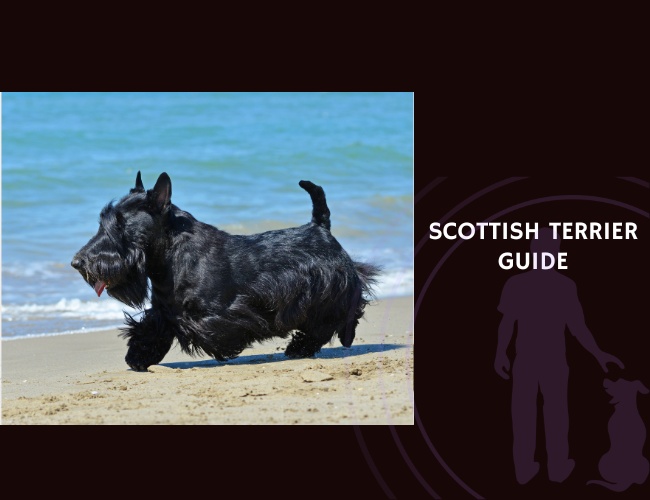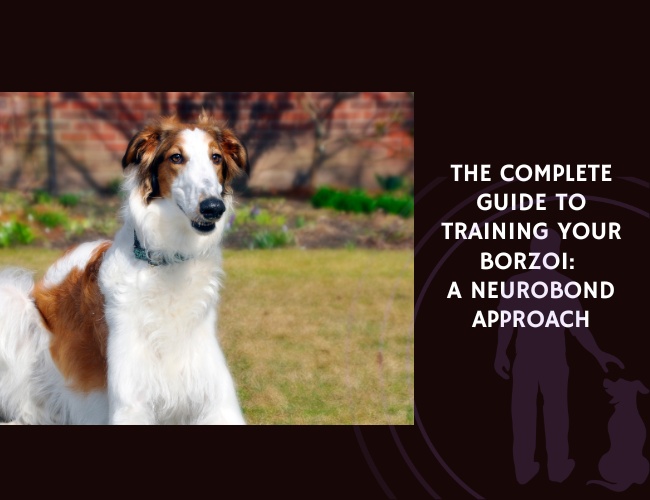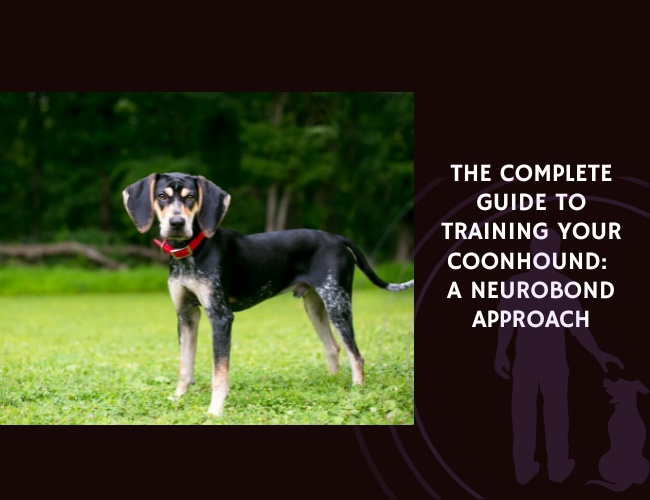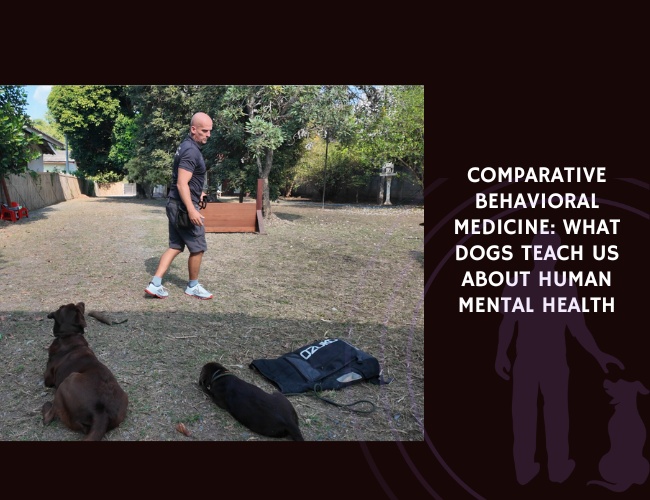Introduction
The Scottish Terrier, affectionately known as the “Scottie,” embodies centuries of Highland heritage in a compact, dignified package. With their distinctive silhouette and unwavering loyalty, these determined little warriors have captured hearts far beyond their Scottish homeland. Let us guide you through understanding these remarkable dogs, whose independent spirit and devoted nature create a unique companion experience unlike any other terrier breed.
Did you know that Scottish Terriers have graced the White House more than any other breed? Their dignified bearing and steadfast character have made them favorites of presidents and everyday families alike. Yet beneath that noble exterior beats the heart of a true terrier – brave, tenacious, and always ready for adventure. 🐾
Character & Behaviour
Understanding your Scottish Terrier’s personality means appreciating their complex emotional landscape. These dogs aren’t just pets; they’re individuals with distinct preferences, boundaries, and ways of showing affection that might surprise you.
The Scottish Terrier’s character reflects centuries of selective breeding for independent work in harsh conditions. This heritage created a dog of remarkable depth – one who thinks before acting, forms opinions about everything, and expresses emotions in ways that might puzzle owners accustomed to more demonstrative breeds. Your Scottie’s behavior patterns stem from both genetic predisposition and individual personality, creating a fascinating study in canine complexity.
What makes Scottish Terriers particularly intriguing is their ability to be simultaneously aloof and deeply devoted. They might ignore your guests while maintaining constant awareness of your location. They’ll pretend indifference to your departure, then position themselves by the door until you return. This emotional paradox defines the Scottie experience – they’re independent dogs who choose dependence on their special people.
Territoriality and Assertiveness: Understanding Your Scottie’s Guardian Instincts
Your Scottish Terrier comes from a long line of vermin hunters and property guardians, and this heritage shows in their everyday behavior. You might notice your Scottie positioning themselves at windows, alert to every passing person or animal. This isn’t just curiosity – it’s their innate territorial awareness at work.
The depth of a Scottish Terrier’s territorial instinct often surprises new owners. These dogs mentally map their domain with remarkable precision, knowing every corner, every usual sound, and every regular visitor. Any deviation from the normal pattern triggers their alert system. You’ll discover your Scottie has different barks for different situations – a sharp warning for strangers, a lower rumble for familiar-but-unwelcome visitors (like delivery drivers), and an excited yip for beloved family members.
Signs of healthy territorial behavior include:
- Alert barking at unfamiliar sounds or visitors
- Positioning themselves between you and strangers
- Patrolling the perimeter of your yard
- Showing increased vigilance during evening hours
- Creating “observation posts” at windows or elevated positions
- Demonstrating different responses to various types of intrusions
This territorial nature means your Scottie takes their job as family protector seriously. While this makes them excellent watchdogs, it also means you’ll need to help them understand when guarding isn’t necessary. Early socialization helps them distinguish between genuine threats and harmless visitors.
Your Scottie’s assertiveness extends beyond simple territory guarding. These dogs possess remarkable confidence for their size, often approaching much larger dogs with an attitude that suggests they’re unaware of any size difference. This “big dog in a small body” mentality served them well when facing badgers and foxes, but it requires careful management in modern settings. You’ll need to protect your fearless Scottie from their own courage, especially around dogs who might not appreciate their bold approach.
Prey Drive and Independent Instincts: The Hunter Within
That adorable Scottie digging in your garden? They’re following instincts honed over centuries of hunting rats and badgers in the Scottish Highlands. This prey drive remains remarkably strong, even in dogs who’ve never seen a farm.
Understanding the intensity of your Scottish Terrier’s prey drive helps explain many puzzling behaviors. When your Scottie freezes mid-walk, staring intently at a pile of leaves, they’re not being stubborn – they’re processing sensory information with the focus of a skilled hunter. Their brain shifts into an ancient mode where modern commands fade against the primal call of the hunt. This isn’t disobedience; it’s biology overriding training in a way that would have ensured survival for their ancestors.
The independent hunting style of Scottish Terriers differs from pack hunters like hounds. Your Scottie was designed to work alone, making split-second decisions in dangerous underground tunnels where human guidance was impossible. This solo hunting heritage creates a dog who assesses situations independently, often reaching different conclusions than you might prefer. When your Scottie pauses before obeying a command, they’re running it through their internal risk-assessment program – a trait that kept their ancestors alive.
You’ll see this hunting heritage manifest through:
- Intense focus on small moving objects
- Digging behaviors, especially near fences or walls
- Quick, decisive movements when spotting potential “prey”
- A tendency to shake toys vigorously (mimicking the killing shake)
- “Scanning” behaviors during walks, constantly checking for movement
- Sudden directional changes when catching interesting scents
- Persistent investigation of holes, crevices, or hiding spots
Understanding this drive helps explain why your Scottie might suddenly bolt after a squirrel or become fixated on rustling leaves. It’s not defiance – it’s DNA. This means secure fencing and leash walks in areas with wildlife are essential for your furry friend’s safety.
The prey drive in Scottish Terriers operates on a hair-trigger mechanism that can activate instantly. You might have a perfectly calm walk until a rabbit appears, transforming your dignified companion into a determined hunter who forgets you exist. This intensity of focus, while frustrating during neighborhood walks, showcases the remarkable concentration these dogs brought to their original work. Managing this drive means accepting it as part of your Scottie’s essential nature while creating safe outlets for expression.
Emotional Expression and Aloofness: Decoding Scottie Emotions
Scottish Terriers have earned a reputation for being somewhat aloof, but this masks a deep emotional complexity. Unlike breeds that wear their hearts on their sleeves, Scotties express affection in subtle, meaningful ways that you’ll learn to recognize and treasure.
The emotional life of a Scottish Terrier resembles an iceberg – what you see on the surface represents only a fraction of what lies beneath. These dogs experience the full spectrum of emotions but express them through a cultural filter shaped by centuries of breeding for independence. Your Scottie feels joy, sadness, anxiety, and love as intensely as any dog, but they communicate these feelings in whispers rather than shouts.
This emotional reserve often confuses owners expecting more obvious displays of affection. Your Scottish Terrier won’t leap into your arms when you return home, but watch their eyes – you’ll see them soften. They won’t demand constant petting, but notice how they position themselves just close enough to touch. These subtle signals constitute a private language between you and your Scottie, one that deepens with time and observation.
Your Scottie shows love through:
- Quiet presence near (but not on) you
- Brief, meaningful eye contact
- A special “grumble” reserved just for family
- Choosing to sleep where they can see you
- Following you from room to room at a respectful distance
- Gentle nose touches during quiet moments
- Bringing you their favorite toy (but not necessarily sharing it)
- Positioning themselves between you and perceived threats
This reserved nature doesn’t mean they love less – they simply love differently. Scottish Terriers form intense bonds with their chosen people, but they express this devotion through loyalty and quiet companionship rather than exuberant displays. Think of them as the strong, silent type who shows they care through actions, not words.
The aloofness that strangers experience differs dramatically from the warmth your Scottie reserves for family. Visitors might find your dog politely distant, acknowledging their presence without enthusiasm. This selective affection isn’t rudeness – it’s discernment. Your Scottie carefully chooses who deserves their emotional investment, making their affection, once earned, particularly meaningful. When a Scottish Terrier decides you’re worthy of their love, you’ve received a gift more precious than the eager affection of less discriminating breeds.
Understanding your Scottie’s emotional expression requires patience and attention to nuance. They might show excitement through a slightly faster tail wag or express contentment with a nearly inaudible sigh. These understated communications create an intimate bond based on mutual understanding rather than obvious displays. 🧡
Intra-Household Social Dynamics: Living with Other Pets
Introducing a Scottish Terrier to a multi-pet household requires understanding their unique social preferences. These dogs often prefer being the only dog, or at least the dominant one, which stems from their independent working heritage.
Managing multi-pet dynamics involves recognizing:
- Same-sex aggression tendencies, particularly between males
- Resource guarding around food, toys, or favorite spots
- The need for separate feeding areas
- Importance of supervised introductions
Your Scottie might coexist peacefully with cats they’ve grown up with, but their prey drive can make new feline introductions challenging. Success comes from patient, structured introductions and respecting your Scottie’s need for personal space. Remember, forcing friendships rarely works with these independent thinkers.
Fear Reactivity and Recovery Thresholds: Building Confidence
Scottish Terriers possess remarkable bravery, but when they do experience fear, their recovery can be slower than other breeds. This isn’t weakness – it’s their thoughtful nature processing the experience thoroughly.
Supporting your Scottie through fear involves:
- Avoiding overwhelming situations during fear periods
- Using calm, confident energy rather than coddling
- Creating positive associations with previously scary stimuli
- Allowing them time to process and recover
You might notice your Scottie remembers negative experiences vividly. This excellent memory serves them well as working dogs but means traumatic events can have lasting impacts. Patient, consistent positive experiences help rebuild confidence without rushing the process. 🧡

Training & Education
Training a Scottish Terrier requires understanding their unique cognitive style. These aren’t dogs who blindly follow commands – they’re independent thinkers who need to see the value in cooperation.
Independent Thinking and Training Resistance: Working With, Not Against
Your Scottish Terrier’s apparent “stubbornness” is actually intelligent independence. These dogs were bred to work alone, making decisions in dangerous situations without human guidance. This means they’ll often pause to consider whether your request makes sense to them.
Successful training strategies include:
- Keeping sessions short (5-10 minutes maximum)
- Using high-value rewards they can’t resist
- Making training feel like their idea
- Avoiding repetitive drills that bore them
Think of training your Scottie as a negotiation between equals rather than a master-servant relationship. When they understand the “why” behind a command, compliance becomes their choice rather than submission. This approach respects their intelligence while achieving your training goals.
Reinforcement Preferences and Food Motivation: Finding What Works
Not all Scottish Terriers are food-motivated, which can surprise owners accustomed to perpetually hungry breeds. Your Scottie might work for treats one day and ignore them the next, requiring you to diversify your reinforcement toolkit.
Effective reinforcers often include:
- Special treats reserved only for training
- Brief play sessions with favorite toys
- Access to interesting scents or exploration
- Verbal praise delivered with genuine enthusiasm
Discovering your individual Scottie’s currency takes experimentation. Some respond best to squeaky toys, others to freeze-dried liver, and some simply want the satisfaction of completing a task well. Pay attention to what makes your dog’s eyes light up – that’s your training gold.
Early Socialisation Impact on Aggression Prevention: The Critical Window
The first 16 weeks of your Scottish Terrier’s life shape their adult temperament profoundly. During this critical period, positive experiences with various people, animals, and environments build the foundation for a confident, well-adjusted adult dog.
Comprehensive socialization should include:
- Meeting people of all ages, sizes, and appearances
- Positive interactions with vaccinated, calm dogs
- Exposure to different surfaces, sounds, and environments
- Handling exercises including paws, ears, and mouth
Remember, socialization isn’t about overwhelming your puppy – it’s about creating positive associations. Quality matters more than quantity. A few excellent experiences trump dozens of stressful ones. Watch your Scottie’s body language and proceed at their comfort level.
Recall Challenges and Scent-Based Distraction: The Outdoor Reality
Let’s be honest – Scottish Terriers aren’t known for their recall reliability. When that terrier nose catches an interesting scent, your carefully trained “come” command might as well be whispered into the wind.
Improving recall success involves:
- Practicing in gradually more distracting environments
- Never calling them when you can’t enforce it
- Using incredibly high-value rewards for successful recalls
- Accepting that off-leash freedom might never be safe
Many experienced Scottie owners simply accept that their dogs will always need leashes or secure fencing. This isn’t failure – it’s realistic management that keeps your determined hunter safe while respecting their nature.
Problem-Solving Capabilities and Enrichment Needs: Engaging the Scottie Mind
Your Scottish Terrier’s intelligence demands regular mental stimulation. Without it, they’ll create their own entertainment – usually involving activities you won’t appreciate, like excavating your garden or redesigning your furniture.
Mental enrichment options include:
- Puzzle feeders that challenge problem-solving skills
- Scent work games hiding treats or toys
- Training new tricks that require thinking
- Rotating toys to maintain novelty
Scottish Terriers excel at activities that engage their natural abilities. Hide treats around the house for them to hunt, or create DIY puzzle toys from cardboard boxes. The goal is channeling their intelligence into appropriate outlets before they decide your baseboards need investigating. 🐾
Stubborn. Steady. Sovereign.
Loyalty isn’t loud—it’s earned.
The Scottish Terrier won’t beg for attention or perform on command. Their affection is quiet, constant, and selective—offered only when respect has been mutual and trust has been built.
Instincts don’t ask for permission.
From the rustle in the bushes to the scent on the wind, a Scottie responds with purpose. Prey drive and territorial pride define their world—managing it means understanding, not suppression.
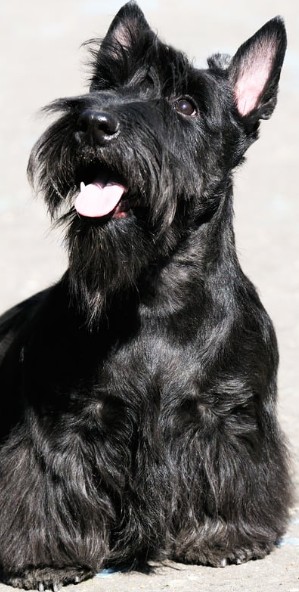

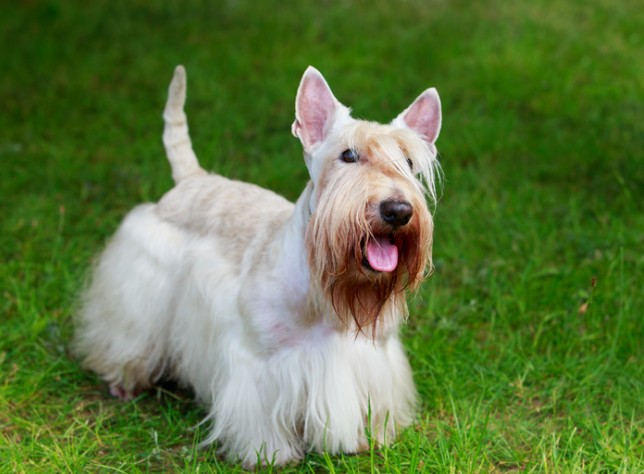
Respect fuels the bond.
You don’t train a Scottie—you negotiate. They think, they decide, they remember. When they choose you, it’s forever—but only on terms forged in patience, not pressure.
Nutritional Recommendations
Proper nutrition forms the foundation of your Scottish Terrier’s health and longevity. These sturdy little dogs have specific dietary needs that, when met, support their active lifestyle and help prevent breed-specific health issues.
Weight Management and Muscular Maintenance: Finding the Balance
Scottish Terriers possess a naturally muscular build that requires careful nutritional support. Their rectangular body shape and low-slung stature mean excess weight puts particular strain on their backs and joints.
Maintaining ideal body condition involves:
- Feeding measured portions rather than free-feeding
- Adjusting food amounts based on activity level
- Monitoring body condition score weekly
- Choosing foods with adequate protein for muscle maintenance
You should be able to feel your Scottie’s ribs easily but not see them. Their waist should be visible from above, with a gentle tuck when viewed from the side. Many Scotties require fewer calories than feeding guides suggest, so start conservatively and adjust based on your dog’s individual metabolism.
Digestive Sensitivities and Fibre Tolerance: Supporting Gut Health
Scottish Terriers often have sensitive digestive systems that respond poorly to sudden dietary changes or low-quality ingredients. You might notice your Scottie experiencing occasional stomach upset or showing pickiness about certain foods.
Supporting digestive health includes:
- Transitioning foods gradually over 7-10 days
- Choosing limited ingredient diets for sensitive dogs
- Adding digestive enzymes or probiotics if needed
- Monitoring stool quality as a health indicator
Some Scotties benefit from grain-free diets, while others thrive on high-quality grains. The key is finding what works for your individual dog and sticking with it. Consistency in feeding times and food types helps maintain digestive stability.
Skin and Coat Nutrient Support: Maintaining That Distinctive Coat
That wiry, weather-resistant coat requires specific nutritional support to maintain its texture and health. Proper nutrition shows in a Scottish Terrier’s coat quality, skin condition, and overall appearance.
Essential nutrients for coat health include:
- Omega-3 fatty acids from fish oil or flaxseed
- Biotin for coat growth and strength
- Zinc for skin health and healing
- Vitamin E as an antioxidant
You’ll know your Scottie’s nutrition supports their coat when it feels harsh and wiry to the touch, lies close to the body, and shows minimal shedding. Soft, fluffy coats often indicate nutritional imbalances or improper grooming rather than better health.
Dental Chew Efficacy and Small-Breed Kibble Impact: Protecting Oral Health
Scottish Terriers’ compact jaws make them prone to dental overcrowding and subsequent periodontal disease. Choosing appropriate kibble size and supplementing with dental chews can significantly impact their oral health.
Dental health strategies include:
- Selecting kibble sized appropriately for their mouths
- Offering raw bones or dental chews 2-3 times weekly
- Avoiding sticky treats that cling to teeth
- Starting dental care routines early
The mechanical action of chewing appropriate items helps reduce tartar buildup. However, not all dental products are created equal – look for those with proven efficacy rather than marketing claims. Your Scottie’s breath should be relatively neutral, not offensive.
Senior Dietary Adjustments and Joint Support: Aging Gracefully
As your Scottish Terrier enters their golden years (typically around age 8), their nutritional needs shift. Senior Scotties often need fewer calories but higher quality protein to maintain muscle mass.
Senior nutrition considerations include:
- Glucosamine and chondroitin for joint support
- Increased omega-3s for anti-inflammatory benefits
- Easily digestible proteins
- Adjusted calcium and phosphorus ratios
Watch for subtle signs of aging like morning stiffness or reluctance to jump. Early nutritional intervention can significantly impact your senior Scottie’s quality of life. Remember, aging isn’t a disease – it’s a life stage requiring thoughtful adjustments. 🧡

Diseases & Susceptibilities
Understanding breed-specific health concerns empowers you to provide proactive care for your Scottish Terrier. While Scotties are generally robust dogs, awareness of potential issues ensures early detection and intervention.
Scottie Cramp Syndrome: Understanding This Unique Condition
Scottie Cramp, a breed-specific neuromuscular disorder, affects some Scottish Terriers during periods of excitement or stress. This condition, while alarming to witness, isn’t painful and doesn’t affect lifespan.
Recognizing Scottie Cramp involves watching for:
- Hyperflexion of the rear legs during movement
- Arching of the spine while running
- Temporary inability to move normally
- Full recovery once excitement subsides
If your Scottie experiences cramping episodes, stay calm and reduce stimulation until it passes. Most affected dogs learn to manage their excitement levels, and many owners report episodes decrease with age. Severe cases might benefit from medication, but most Scotties live normal lives despite occasional cramping.
Bladder Cancer (TCC) Predisposition: Vigilance Saves Lives
Scottish Terriers face a significantly higher risk of transitional cell carcinoma (TCC) compared to other breeds. This aggressive bladder cancer requires vigilant monitoring for early detection and intervention.
Warning signs requiring immediate veterinary attention:
- Blood in urine (even trace amounts)
- Straining to urinate or frequent attempts
- Accidents in previously housetrained dogs
- Changes in urine stream or flow
Regular urinalysis screening, especially for Scotties over age 6, can catch TCC early when treatment options remain most effective. Don’t dismiss urinary changes as simple infections – insist on thorough evaluation including ultrasound if symptoms persist despite treatment.
Hypothyroidism and Metabolic Disorders: The Silent Slowdown
Hypothyroidism commonly affects middle-aged Scottish Terriers, often developing so gradually that owners miss early signs. This hormonal imbalance impacts every body system, making recognition crucial.
Early hypothyroidism symptoms include:
- Unexplained weight gain despite normal eating
- Lethargy or mental dullness
- Coat changes including hair loss or dullness
- Cold intolerance
Annual blood work including thyroid panels helps catch this condition early. The good news? Hypothyroidism responds excellently to daily medication, with most Scotties returning to their normal energy levels within weeks of starting treatment.
Skin Tumours and Sebaceous Cysts: Monitoring Skin Health
Scottish Terriers develop various skin growths more frequently than many breeds. While most prove benign, careful monitoring ensures early detection of potential problems.
Skin monitoring involves:
- Monthly full-body examinations
- Documenting new growths with photos
- Noting any changes in existing lumps
- Prompt veterinary evaluation of concerning changes
Your Scottie might develop multiple sebaceous cysts throughout their lifetime – these benign, pimple-like growths rarely require removal unless they bother your dog. However, any rapidly growing, irregular, or ulcerated masses warrant immediate attention.
Dental Disease and Periodontal Risk: Small Mouth, Big Problems
The Scottish Terrier’s compact jaw creates perfect conditions for dental disease. Overcrowded teeth trap food and bacteria, leading to gingivitis, periodontal disease, and potential systemic health issues.
Preventing dental disease requires:
- Daily tooth brushing (yes, really!)
- Professional cleanings as recommended
- Avoiding hard items that could fracture teeth
- Regular oral examinations at home
Start dental care routines when your Scottie is young, making it a positive experience with special toothpaste flavors. Prevention costs far less than treating advanced dental disease, both financially and in terms of your dog’s comfort. 🐾
Attitude & Lifestyle
Scottish Terriers adapt to various living situations, but understanding their lifestyle preferences helps create an environment where they truly thrive.
Urban Compatibility and Bark Control: City Living with a Scottie
Despite their rural origins, Scottish Terriers often excel as urban companions. Their moderate exercise needs and compact size suit apartment living, though their alert nature means managing barking becomes essential.
Successful urban living strategies include:
- Establishing quiet hours through consistent training
- Providing adequate mental stimulation indoors
- Using white noise to minimize outside triggers
- Teaching a reliable “quiet” command
Your Scottie’s barking serves a purpose – they’re telling you about potential threats. Acknowledge their alert, then redirect their attention. Punishment rarely works and might increase anxiety-based barking. Instead, reward quiet behavior and manage their environment to reduce triggers.
Interaction with Children and Handling Sensitivity: Family Considerations
Scottish Terriers can make wonderful family dogs, but they’re better suited to families with older, respectful children. Their low tolerance for rough handling means supervision remains essential.
Creating positive child-dog relationships involves:
- Teaching children to respect the dog’s space
- Supervising all interactions with young children
- Providing your Scottie with child-free retreat spaces
- Involving older children in training and care
Your Scottie might never become a rough-and-tumble playmate, but they often form deep bonds with gentle children who respect their boundaries. Many Scotties appointed themselves as quiet guardians, watching over “their” children from a comfortable distance.
Activity Needs and Mental Engagement Indoors: Preventing Boredom
While not high-energy dogs, Scottish Terriers require regular physical and mental activity to prevent destructive behaviors. Their exercise needs remain moderate but consistent throughout their lives.
Meeting activity needs includes:
- Two 20-30 minute walks daily
- Indoor games during inclement weather
- Puzzle toys and scent work
- Short training sessions throughout the day
Scottish Terriers don’t need marathon runs, but they do need engagement. A bored Scottie becomes an excavator, barker, or furniture redesigner. Structure their day with predictable activity periods, and they’ll contentedly nap between adventures.
Adaptation to Cold and Weather Preferences: Highland Heritage
Your Scottish Terrier’s double coat provides excellent protection against cold, wet weather – after all, they evolved in the Scottish Highlands! This weather resistance means they’ll often demand walks regardless of conditions.
Weather considerations include:
- Providing appropriate rain gear for you (they won’t need it!)
- Checking paws for ice balls in winter
- Offering cooling options in extreme heat
- Never shaving their protective coat
Most Scotties genuinely enjoy cold, drizzly days that send other dogs running for cover. However, their low-slung bodies mean they can get chilled if walking through deep snow for extended periods. Watch for shivering and adjust outings accordingly.
Ageing Behavioural Shifts and Geriatric Bonding Patterns: The Golden Years
As Scottish Terriers age, their already dignified demeanor often becomes even more pronounced. Senior Scotties might show decreased tolerance for disruption while simultaneously seeking more comfort from their chosen people.
Supporting your aging Scottie involves:
- Maintaining familiar routines
- Providing orthopedic bedding in favorite spots
- Adjusting expectations for activity and training
- Increasing veterinary monitoring
You might notice your senior Scottie becoming more vocal about their needs or showing increased attachment to one family member. These changes reflect normal aging processes combined with the breed’s naturally strong bonding tendencies. Embrace this phase – senior Scotties offer a special kind of companionship built on years of mutual understanding. 🧡
Conclusion: Is the Scottish Terrier Right for You?
After exploring the complex personality, specific care needs, and unique challenges of Scottish Terrier ownership, you might wonder if this breed suits your lifestyle. The answer depends on what you seek in a canine companion.
Scottish Terriers reward patient, understanding owners with unwavering loyalty and dignified companionship. They’re not the right choice if you want an eager-to-please dog who lives for your approval. But if you appreciate independent thinking, subtle affection, and a dog with their own opinions, a Scottie might be your perfect match.
The ideal Scottish Terrier owner:
- Values independence and respects boundaries
- Enjoys a dog with personality and opinions
- Commits to proper grooming and healthcare
- Appreciates subtle displays of affection
- Can provide consistent, patient training
Living with a Scottish Terrier means accepting their quirks along with their qualities. Yes, they’ll ignore your recall command when hunting mice. True, they might never befriend your neighbor’s dog. But they’ll also guard your home with fierce devotion, make you laugh with their serious expressions, and choose to spend their quiet moments by your side.
These remarkable dogs teach us that love doesn’t always look like tail-wagging enthusiasm. Sometimes it looks like a small, dignified terrier who positions themselves where they can watch over you, asking nothing more than to share your life on their own terms. For the right owner, that’s more than enough – it’s everything. 🐾
Is a Scottish Terrier right for you? Only you can answer that question. But if you’re ready for a dog who’ll be your partner rather than your subordinate, who’ll make you earn their respect while giving you their heart, then perhaps it’s time to welcome a wee Scottie into your life. The journey won’t always be easy, but it will always be worth it.

